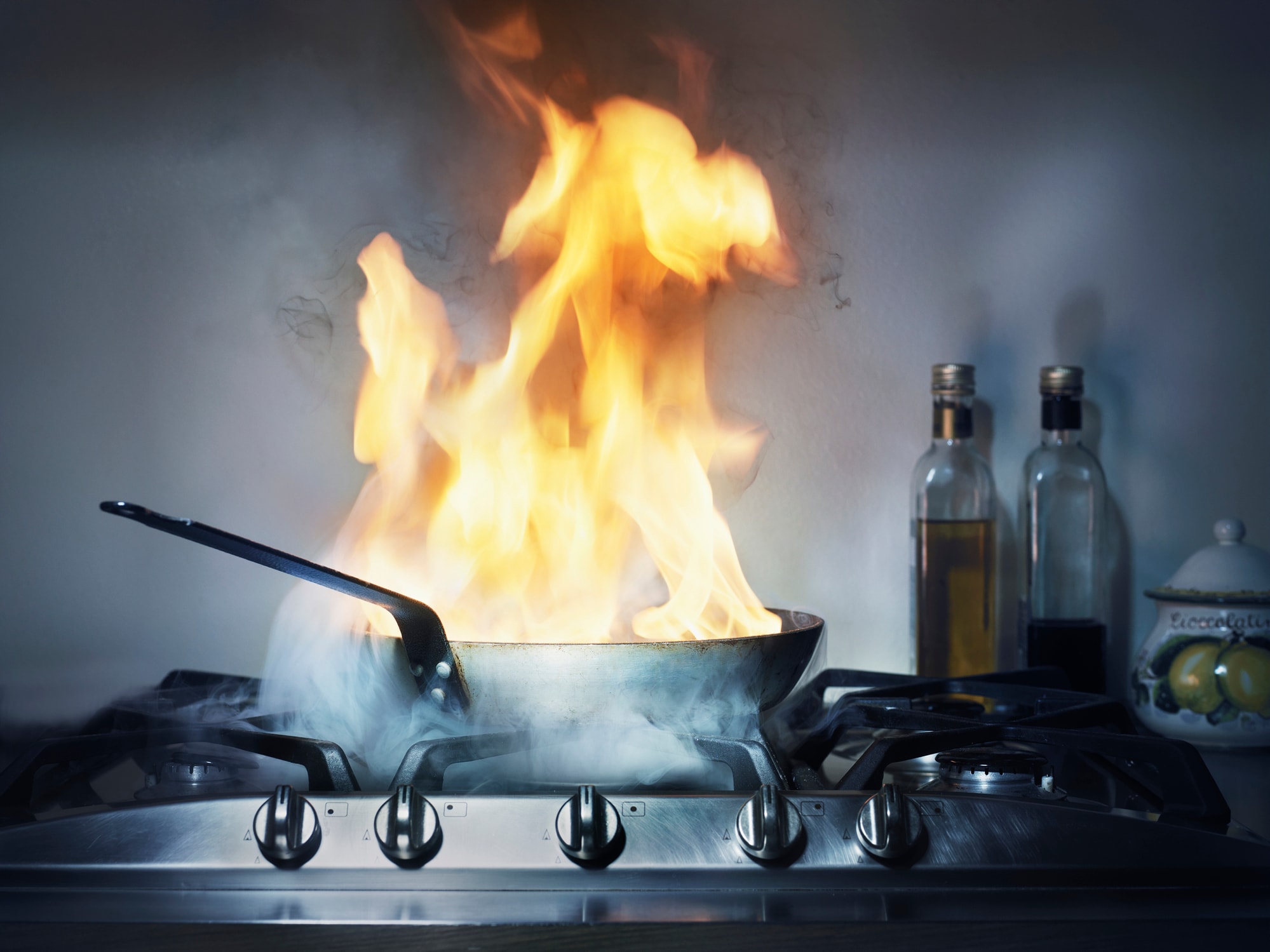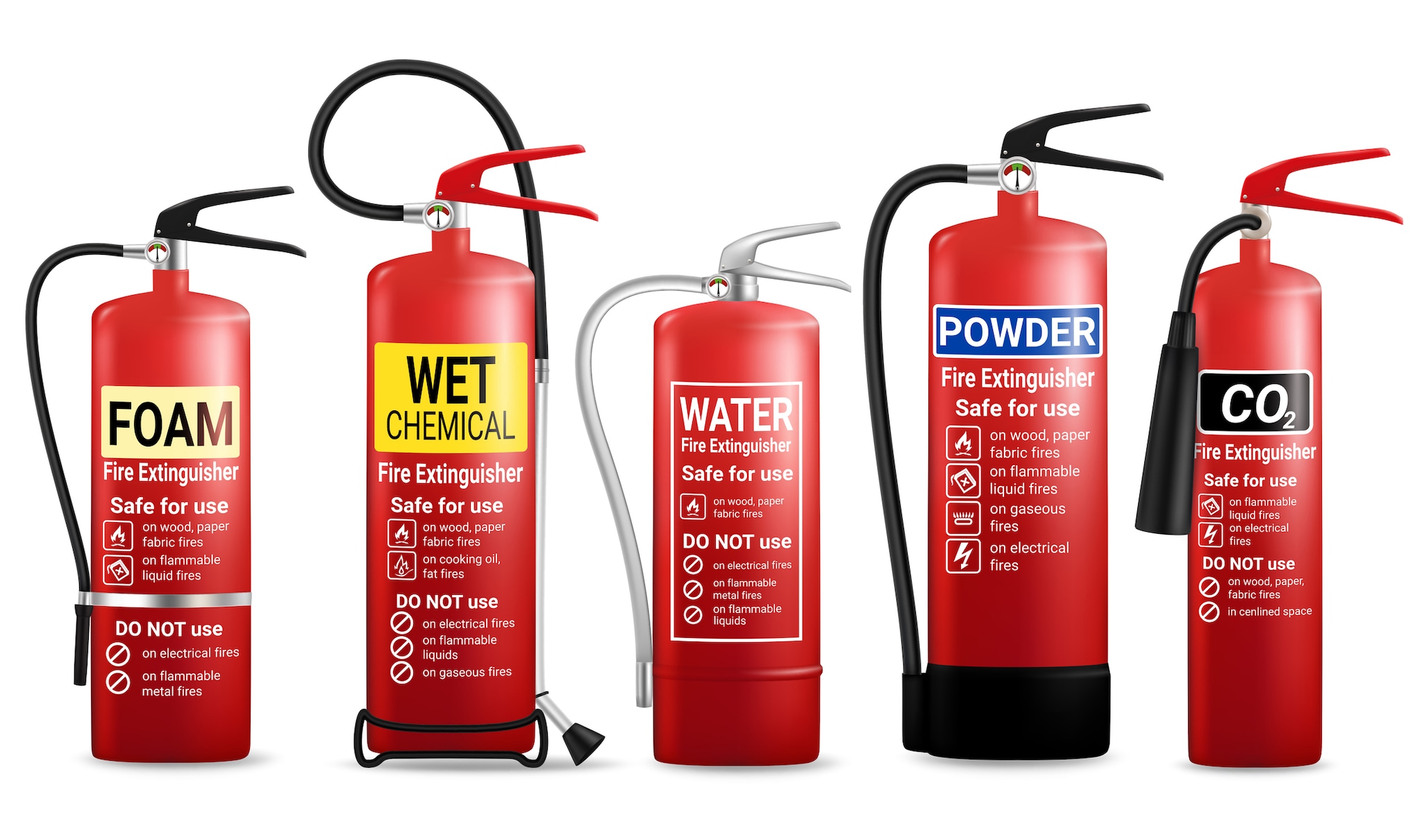Every home should have at least one fire extinguisher, and every adult member in the home should know how to use it. You should never use a portable fire extinguisher to fight a huge blaze, but they can help prevent the spread of smaller fires in the home.
This article will go over choosing and using a fire extinguisher. We’ll also offer some handy tips and tricks on how to control fires.


How do you use a fire extinguisher?
No one wants to struggle with a fire extinguisher when you need to use it on fire. Do you know how to use a fire extinguisher? If a fire breaks out in your home, will you be able to smother the flames?
An extinguisher can help smother a fire and potentially save your home from catching on fire. Having basic knowledge about a fire extinguisher and how to use one can be crucial in helping extinguish the flames.
- You should only try to smother a fire if you know how to use a fire extinguisher.
- If the fire gets out of control or doesn’t go out after using a fire extinguisher, call 911.
- If you don’t know how to use an extinguisher, you should retreat and call 911.
- Never attempt to fight a large fire by yourself.
When should you use a fire extinguisher?
Before using a fire extinguisher, there are a few questions you can and should ask yourself. If a fire spreads or gets out of control, you should immediately leave and call 911.
● Have you had the proper portable fire extinguisher training?
● Can you physically lift and use an extinguisher?
● Have you, or someone else, called the fire department?
● Do other people in the building know about the fire?
● Is it safe to operate a fire extinguisher without the risk of smoke or powder inhalation?
● Is the fire contained to a single object and hasn’t spread to other items in the home?
● Is there an escape route away from the fire you can take if you can’t smother the fire?
If you’ve answered yes to these questions, you can move on to operating a fire extinguisher.
How do you use a fire extinguisher, step-by-step?
NFPA has a handy acronym to help you remember how to use a fire extinguisher: P.A.S.S. Before fighting a fire, make sure you are a safe distance away. Don’t start moving towards the fire until it goes out.
Pull the ring/safety pin. You’ll want to point the nozzle towards the fire and away from you as you pull the ring.
Aim towards the base of the fire, not the top or middle.
Squeeze the lever. This will release the foam.
Sweep the nozzle from side to side.
A fire might re-ignite, so you should keep a safe distance from it once you’ve deployed a fire extinguisher. If the fire seems out, you should still leave the area and call 911. Lingering smoke particles can be hazardous.
Tell the fire department that the fire is out, but wait for them to clear your home.
How to choose the right fire extinguisher for your home
One of the most important things you can do when selecting a fire extinguisher is to ensure that you have the correct one for the type of fire that is likely to happen in your home.
For example, electrical equipment that catches fire will require a different extinguisher class than a grease fire.
There are five main classes of extinguishers, plus multipurpose fire extinguishers. Each fire extinguisher has a different class label, depending on the fire it can fight.
How does a fire extinguisher put out a fire?
A fire needs three key elements, plus a chemical reaction between these elements: oxygen, heat, fuel and a chemical reaction between these three elements.
Remove one of these elements, and the fire goes out.
Different Kinds of Fire Extinguishers
Type of Fire Extinguisher |
What it’s Used For |
Class A |
Ordinary combustibles like wood, cloth, plastic or paper. |
Class B |
Combustible liquids, gasses, grease, oil, gasoline, alcohol or propane. |
Class C |
Electrical fires from appliances, tools or wires. |
Class D |
Flammable metals such as titanium, sodium, magnesium or potassium. |
Class K |
Vegetable-based oils and animal fats used in cooking. |
Multipurpose BC |
Flammable liquids or gasses, or electrical fires. They are designed to extinguish B and C fires.. |
Multipurpose ABC |
Fires that involve ordinary combustibles, flammable liquids, gasses or electrical equipment. They are designed to extinguish A, B, and C fires. |


Different Fire Extinguisher Types
There are different materials in portable fire extinguishers that help smother fires, from dry foam to cool gas and sometimes, water.
Foam extinguishers
Foam extinguishers work by both smothering the oxygen from the flames and also cooling the fire down. A foam extinguisher is one of the most common extinguishers.
Use foam extinguishers with Class A or B fires, petrol, diesel, solvents or paint, and organic solids, including paper, wood, textiles, fabrics, cardboard, and furniture.
Never use foam extinguishers on flammable metals, grease fires or electrical fires.
Dry powder extinguishers
These extinguishers are like dry chemical fire extinguishers, but they smother flames by removing the fuel from the oxygen or by eliminating heat.
They work best on Class D or combustible metal fires, but they don’t work on any other fire classes.
Dry chemical fire extinguishers
These extinguishers create a chemical reaction between the fire or by creating a layer between the fuel and oxygen in Class A fires. Multipurpose fire extinguishers use dry chemicals, making these effective on Class A, B and C fires.
Water extinguishers
Water extinguishers work by covering the water and cooling down the heat until the fuel can no longer burn and the flames go out.
They are best for Class A fires. Solid combustibles like wood, leaves, fabrics, paper or cloth.
Never use water extinguishers with any kind of electricity, electrical equipment, or flammable liquids.
Wet chemical extinguishers
A wet chemical fire extinguisher has a thick, soapy foam that stops oxygen from reaching the flames. These extinguishers are standard in commercial kitchens and work best against Class F fires that deal with grease and fat.
Some wet chemical extinguishers can also fight Class A fires (wood, paper) or Class B (paint, petrol) fires, though a foam or water extinguisher is more common. Check the manufacturer’s instructions to see if your wet chemical extinguisher can be used with these fire classes.
Carbon dioxide extinguisher
CO2 extinguishers are commonly placed in office or server rooms and are most often used for electrical fires because they won’t damage electronic equipment. You can also use CO2 extinguishers on Class B fires, but they pose a risk of re-ignition.
They work by replacing the oxygen the fire needs, preventing it from igniting. Never use these fire extinguishers on cooking or grease fires or in enclosed spaces.
7 Fire extinguisher and fire safety tips
Now that you know what types of fire extinguishers fight different fires, here are a few fire safety tips to consider:
1. If you don’t know how to use a fire extinguisher, speak to your local fire department and take some classes. This hands-on training may be handy if you ever have to fight a fire in your home.
2. Regularly check your fire extinguisher’s pressure gauge.
3. Replace any expired extinguisher that shows signs of rust or damage.
4. Check your fire extinguisher and fire alarms at least once a year.
5. Practice a Fire Evacuation Plan with your family.
6. Ensure that you have working smoke alarms installed throughout your home.
7. Place your fire extinguisher in an easy-to-access area that isn’t blocked by shelves or furniture.
Get fire alerts—from virtually anywhere—with ADT’s smart fire detectors.
ADT’s fire detectors offer fast fire detection—when every second counts. Our 24/7 monitoring centers can notify you and the fire department when smoke is detected, even if you’re asleep or on vacation.
Contact ADT today to see if we can help you protect your home against fires, floods and more.
Frequently Asked Questions About Fire Extinguishers
From what distance should I use a fire extinguisher?
When fighting a fire, you should always maintain a safe distance to avoid injury. Fight fire from 8
to 10 feet away. Make sure you’re pointing the fire extinguisher at the base of the fire and not
the top for the best results.
What are the four types of fire extinguishers?
The four main class types of fire extinguishers include:
● Class A, that fight ordinary combustibles
● Class B, which fights flammable liquids
● Class C, which is used against energized electrical equipment
● Class D, which is used against combustible metals
There is also a Class K fire extinguisher that is used in commercial kitchens to fight grease fires,
as well as multipurpose fire extinguishers, used to fight several classes of fire.
What type of extinguisher is used for electrical fires?
You can use class C fire extinguishers against electrical equipment and appliances. You can
also use a carbon dioxide extinguisher. A CO2 extinguisher is commonly used in offices and server room fires.
Can you hang a fire extinguisher?
Install your fire extinguisher using the hardware it came with, which could include brackets or a hanger.
You can also install it in a fire extinguisher cabinet. Wherever you install your extinguisher, it should be easy to access and see. If you put it where it’s partially obscured, don’t forget to place a label explaining where the fire extinguisher is located.
Related Articles:


